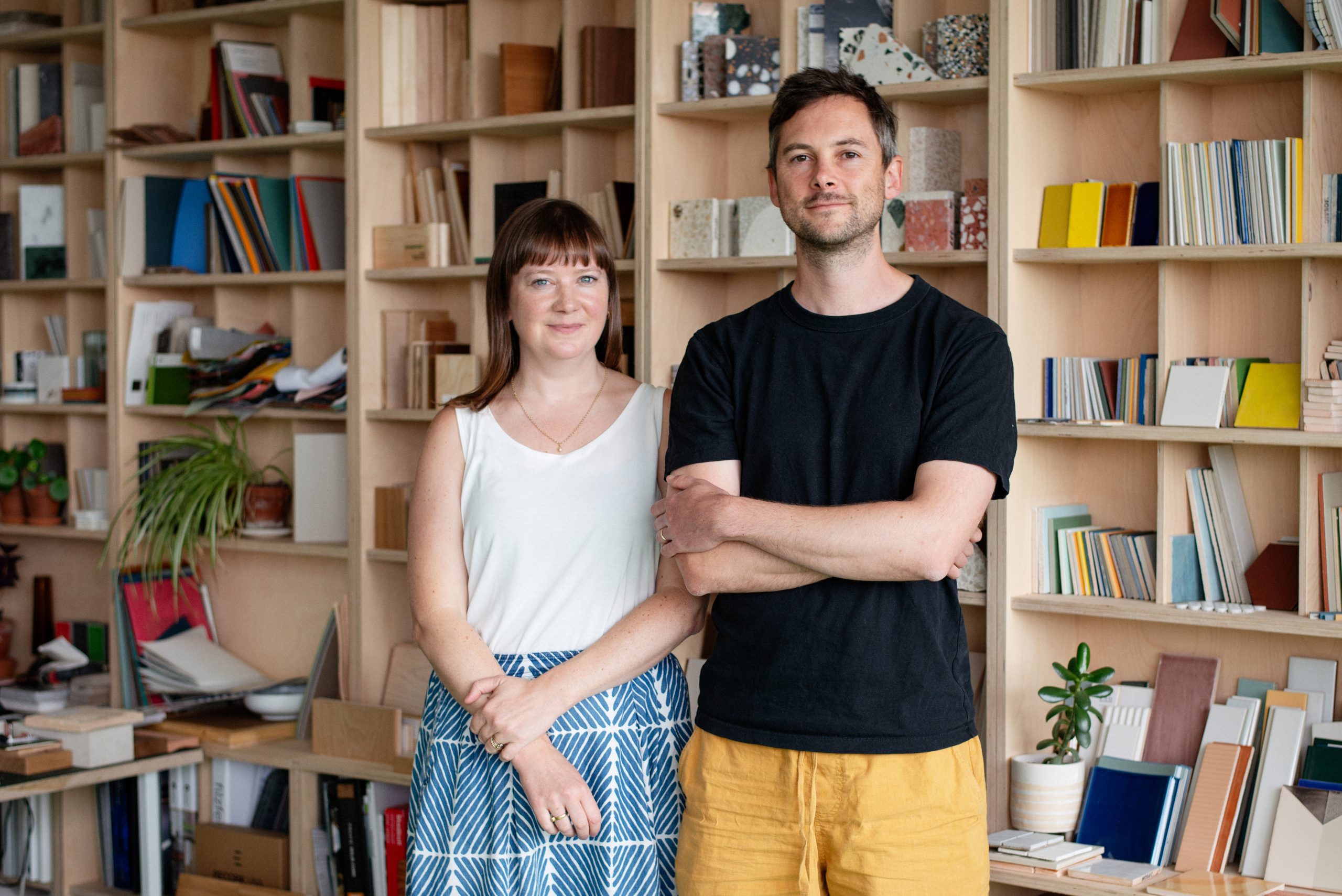The Mid-century Story
When we founded Story of Home, our devotion to design-led London living meant that mid-century housing, the once-derided post-war architectural style, would always be an essential part of our sales and lettings business. Our love of this resurgent architectural and design movement goes beyond the aesthetic, it is a central component of our business and reputation for connecting Londoners with homes with style.

Stuart and Mathew, Story of Home founders, Canyon House, Primrose Hill, NW3
What do you picture when you hear the term “mid-century architecture”?
Think Colin Firth’s home in A Single Man, Jackie Treehorn’s pad in The Big Lebowski, think Mad Men, think open-plan, clean lines, big windows, parquet floors and stylish practicality. In short, picture the houses and flats built proudly on these design principles in the twenty-five years after World War II and you are looking at mid-century style.
The homes from this wonderful period in architectural history that we have sold recently serve as a reminder that mid-century does not equate to mere minimalism or the achromic. Figurative and abstract pattern were as integral to mid-century design as simplicity of form.
Canyon House in Primrose Hill was a great example of what you can do with a mid-century property if you choose to eschew the Scandinavian tradition of minimal clean lines and subtle tones. Our clients had brought California to their north-west London home with warm colours placed alongside teak and light oak. It was a beautifully put together home that some of our viewers found mind-blowing for its showcasing of what mid-century can look like when it embraces West Coast over European.
That said, Canyon House embraced the Scandi ethos of bringing the outside in, with a strong sense of the boundaries between garden and interior being removed by timber-framed windows that suggested glimpses of infinite green space.

The four-bedroom house we sold on Glenilla Road in Belsize Park was redolent of the finest opportunities for clean, light-filled, minimalist home design. Conscious of the very large garden, the architects identified the first floor living room as the showpiece of the home and built a conservatory garden room on to it, with steps leading directly down to the green space. The rationale for this had its roots in the mid-century ethos of bringing the outside in. The first floor was the most desirable area of this covetable property. It had the best light and perfect proportions, so they made this the interior space that connected most simply to the outside.
For the two of us, our own first awakening to mid-century as young adults was decidedly trans-Atlantic, coming via the diners and motels of 1950s Americana calling to us from TV and movie screens. This was despite the fact that in the huge rebuilding process that followed World War II, the mid-century architecture that emerged from the rubble to fill the bomb craters and wastelands of London was most heavily influenced by the Danes and the Swedes. The eight million visitors to the 1951 Festival of Britain on the South Bank, a showcase for modernism and post-war optimism, were treated to a resolutely Scandinavian rather than American menu. And for the next two decades the style and methods on show for those five months of the festival on the banks of the river Thames would be the dominant approach to British architecture.

Glenilla Road, Belsize Park, NW3
This was a period of innovation and design growing out of the increased and visible use of steel, glass and reinforced concrete, and, in residential architecture, designed upon straight and angular lines with an absence of fuss. Hundreds of thousands of homes were built in the brave new post-war world, with more light flooding in through bigger windows into coherent, open spaces. And yet, by the 1980s, this housing had fallen out of fashion and was dismissed as cold and sterile. People didn’t know what they were supposed to think of mid-century housing, and whilst its qualities and character remained rock solid, its popularity fell off a cliff.
The transitional and cyclical nature of design trends and the quintessential qualities of mid-century architecture made it inevitable that public opinion would turn full circle in time. That time is now. We live and work in the post-derision era, with a renewed appreciation for the experience of making a home in a mid-century property. Ours is a city in which modernist landmarks are listed buildings, and where estate agents like us, who know their way around mid-century housing, have the specialist expertise to locate buyers who are willing and able to bid highly for such property.

Canyon House, Primrose Hill, NW3
Anyone who has worked with us, or regularly reads Tales of the City, knows that we both cover hundreds of miles walking the residential streets of London habitually. We know it intimately and in depth. From the rich swathes of Austin Vernon & Partners-designed housing on The Dulwich Estate and Eric Lyons’ Span estate “homes-within-a-garden” in Blackheath, to the 1960s houses of Highgate and nearby Stoneleigh terrace in Archway, mid-century homes adorn London north, south, east and west. We love the Bill Howell and Stan Amis-designed four-storey house overlooking Hampstead Heath and constructed on the principles of Le Corbusier’s Modulor system, and the airy, open-plan Americana of the Dinerman, Davison & Hillman-designed apartments in Copper Beech, Highgate N6.
We have also always been drawn to the essential story of survival and rebuilding which lies at the birth of the mid-century movement. Two of the most important pioneers of mid-century, Walter Gropius and Ludwig Mies van der Rohe, fled Nazi Germany to teach in the US. Their migration to a safe haven would allow them to produce work that, in turn, formed the basis of London’s rebuilding itself from the wreckage of war. There is a simple, clean, functional shape to that story that mirrors the qualities of mid-century homes.
As a seller, you need to find an agent who knows the mid-century story inside out, an expert who understands what they’re dealing with, because everything about this style and period of property is dramatically different to what went before it. These are sought-after homes offering unrivalled opportunities to design-led buyers, especially as refurbishing a mid-century home is more straight-forward than renovating any other period of property.
Despite the post-war building boom, when it comes to mid-century architecture, you are talking about a mere twenty-five-year period of construction, and, in comparison to the decades of house building before and since, there are relatively few mid-century homes out there. That is why finding an agent who understands what the property is and knows how to find a buyer who is going to appreciate it is paramount to getting it sold at the right price.
To talk to us about selling your mid-century home, or finding one, contact us on 020 7867 3999 or hello@storyofhome.co.uk




















